 Photo from Getty Images
Photo from Getty Images
Originally Posted On: https://dankbudz.com/blog/cannabis-microdosing/
Microdosing cannabis has become increasingly popular in recent years, with many people turning to the practice to enhance their work and personal lives. The idea behind microdosing is to take just enough of a given substance to experience subtle benefits without experiencing intense psychoactive effects.
What Is Microdosing?
Microdosing is the practice of consuming small amounts of a substance like psychedelics (LDS, psilocybin) or cannabis to enhance productivity, creativity, and overall well-being. In particular, the practice has been studied recently in hopes of helping people reduce symptoms of PTSD and depression. The idea behind microdosing is to take a sub-perceptual dose, meaning a dose that is not enough to produce a full-blown psychedelic experience but enough to produce subtle changes in thought, mood, and behavior.
Proponents of microdosing argue that it can improve focus, concentration, and decision-making. It may also help to reduce stress and anxiety, as well as increase feelings of well-being and contentment. Some people even report that microdosing helps to increase their creativity, allowing them to approach problems and tasks in new and innovative ways.
Psychedelic Microdosing
Psychedelic microdosing, with substances like psilocybin and LSD, is a popular method of using a drug in a controlled and arguably safer manner to achieve positive effects without the psychedelic experience. Microdosing with psychedelics is becoming increasingly popular, particularly among entrepreneurs, academics, and other high achievers who are looking for a competitive edge. However, it’s important to note that microdosing is not without its risks.
The lack of clear terminology regarding microdosing for any psychedelic drug makes it difficult to perform uniform research or arrive at a safe dose. For example, one definition of psilocybin microdosing is approximately .20 to 20% of a recreational dose—a fairly broad range. In addition, psilocybin mushroom potency varies widely, while LSD is a clear, flavorless substance. It is virtually impossible to calculate a microdose outside of a clinical study.
For this reason, there is a lack of scientific research on the long-term effects of microdosing, and some experts warn that it could lead to addiction or other negative consequences. It’s important to note that prolonged use of these compounds can result in psychedelic tolerance. Even if microdosing is effective, use may become less effective over time without increasing the dose. Also, psychedelics are not legal in many countries, and thus, obtaining and consuming them can lead to legal trouble. In general, consuming psychedelics without proper guidance and support can be dangerous and lead to negative outcomes.
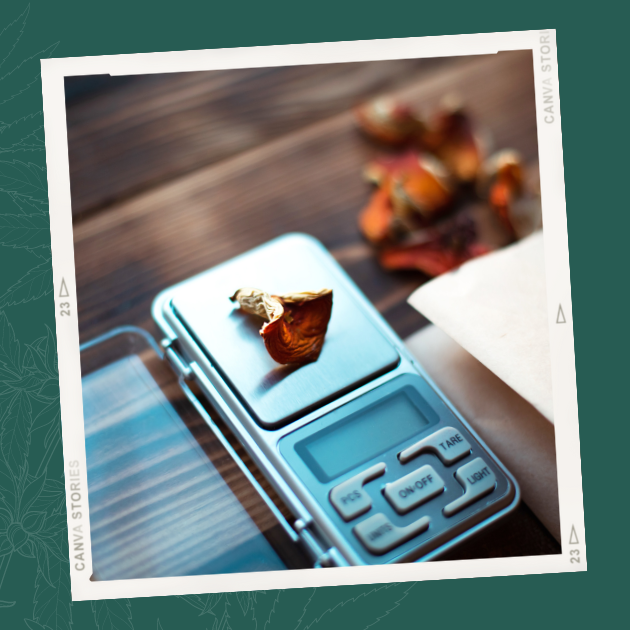
Cannabis Microdosing
Cannabis is another common substance used for microdosing, as it contains a wide variety of therapeutic compounds known as cannabinoids. These compounds play a key role in protecting the plant from parasites, UV damage, pathogens, predators, and more—some of these qualities appear to be beneficial to humans, as well.
Some of the most well-known and commonly found cannabinoids in cannabis include tetrahydrocannabinol (THC) and cannabidiol (CBD). However, there are over 100 different cannabinoids found in the cannabis plant, most of which are not psychoactive and many of which hold medicinal benefits.

The best-known cannabinoid is THC, which is responsible for the majority of the psychoactive benefits of the plant. When heated, acidic THC precursors experience a process known as decarboxylation, resulting in psychoactive THC. That’s why you must burn or “decarb” cannabis to achieve euphoric effects. If you ingest THC, metabolism produces 11-hydroxy-THC, a derivative with higher potency and the ability to interact with the brain. This effect can make the high you experience after eating an edible last even longer and feel more intense.
As mentioned, however, THC is far from the only important compound in cannabis. CBD is quite structurally similar to THC and even has the same atoms in a different arrangement. It also exhibits therapeutic effects but is not psychoactive. Cannabis is also host to a wealth of terpenes, flavorful, scent-producing compounds that have their own unique benefits.
Like psychedelic microdosing, cannabis microdosing is the practice of consuming small, precise doses of cannabis to achieve therapeutic effects rather than consuming larger amounts for more intense effects. Microdosing is becoming an increasingly popular way to consume cannabis. In particular, there are two major advantages to microdosing over regular cannabis consumption.
Little to No Psychoactive Effects
One of the main benefits of cannabis microdosing is that it allows individuals to experience the therapeutic effects of the plant without the psychoactive effects that can be associated with higher doses. For example, microdosing cannabis can help reduce pain and inflammation while also improving mood and overall well-being. It allows individuals to experience these benefits without the potential for psychoactive drawbacks like anxiety or paranoia.
Makes Cannabis More Accessible
In addition, microdosing can be beneficial for those who are new to cannabis. Microdosing allows people to become familiar with the effects of the plant before consuming larger doses. Also, because microdosing involves consuming smaller amounts of cannabis, it requires less product overall, making it a more budget-friendly option for those who use cannabis for medicinal purposes.
It is important to note that the effects of cannabis can vary from person to person, and what may be a microdose for one person may not be for another. Start with a low dose and gradually increase it to find what works best for you. If you do choose to microdose, keep in mind that consuming cannabis can affect your ability to drive or operate heavy machinery—use caution when consuming cannabis and engaging in activities that require focus and attention.
How to Microdose with Cannabis
There are various products available for microdosing cannabis, but some may be more effective than others. Smoking or vaping cannabis is one option, but it can be difficult to control the amount of THC in the system using this approach. To overcome this, experts recommend using products such as tinctures, oils, or cooking with cannabis edibles, which allows users to control the dosage more accurately. The use of THC-infused tea or other liquids can also be an alternative for those seeking immediate relief, as the effects can be felt after just 10 minutes.
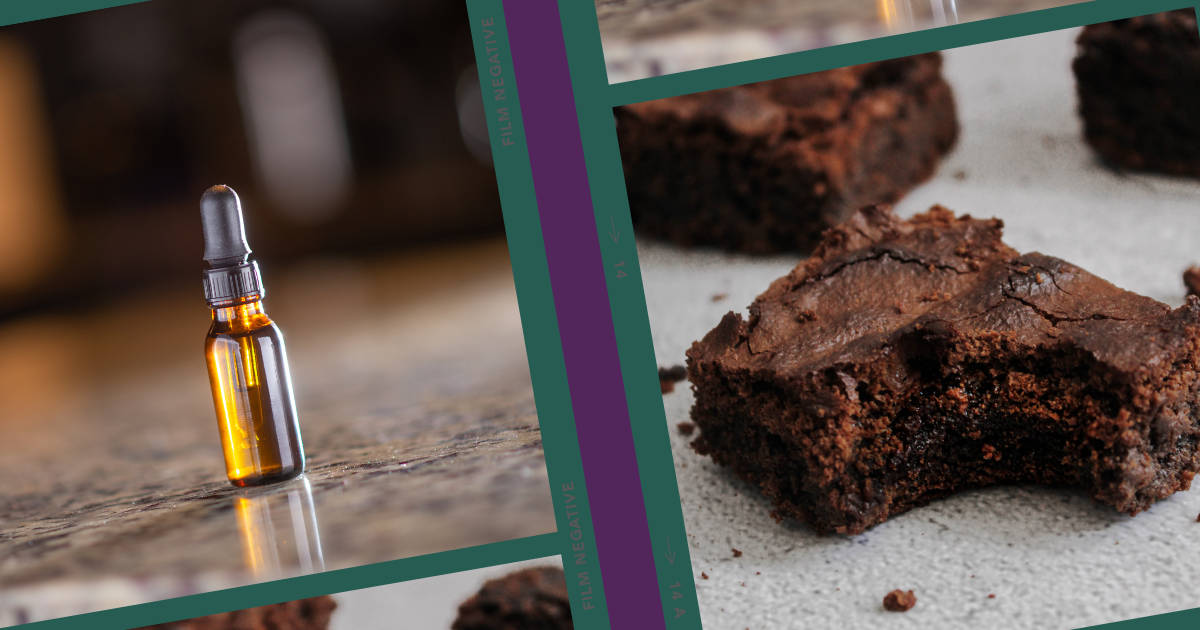
However, when it comes to edibles, users should exercise caution as untested edibles are unreliable in their ability to deliver a low dose of THC. To avoid this, many companies now offer products specifically designed for microdosing, such as mints and chocolates with THC concentrations starting at 2.5 milligrams. Products like these can also be a good option for first-time cannabis consumers as they are less likely to experience any negative effects.
Let’s look at each major consumption method to determine its potential for microdosing.
Combustion
Combustion, including smoking cannabis flower from a pipe or joint, may be a simple method for consuming cannabis. However, it can be costly and imprecise in terms of dosage control. For example, one inhale can easily exceed what many consider to be a microdose—plus, it can be difficult to repeat the same dosage again. If you prefer combustion, limit your microdose to one inhale of low-THC flower.
Vaporization
Cannabis vaporization is a good microdosing choice for many reasons. First, it allows you to avoid some of the lung irritation caused by smoking cannabis. It also enables you to calculate and consume a precise, accurate dose. While you can vaporize either dried cannabis flower or cannabis concentrates, keep in mind that the THC found in flower may vary. However, concentrates typically come pre-dosed and are much simpler to measure.
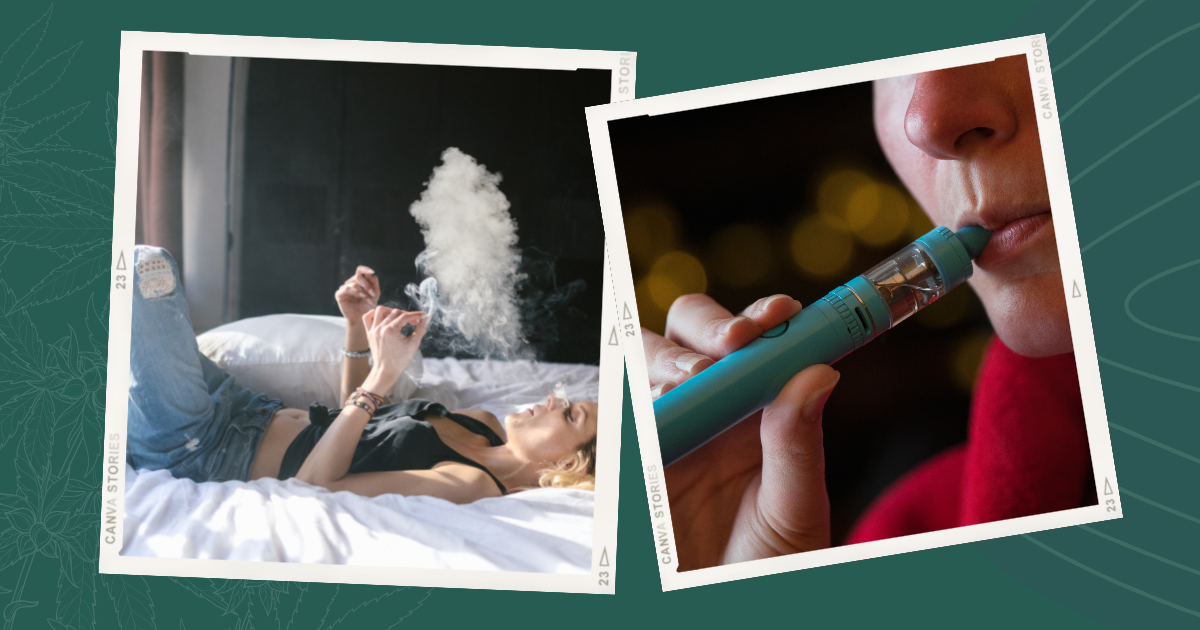
Ingestion
Ingesting cannabis is a popular and effective method of microdosing. This is because regulations require companies to clearly indicate dosing on the package, and the products are thus simple to measure. Better yet, there is a wide range of products available, including soft chews, mints, capsules, and cannabis tinctures. This makes it easy to measure and control the exact amount of THC that you’re consuming, which is particularly important when microdosing.
However, one of the downsides of oral ingestion is that it requires a bit of patience. The effects of cannabis can take anywhere from thirty minutes to a couple of hours to set in, which can make gradually adjusting your dose more challenging. This is why it’s important to approach microdosing with a slow and steady mindset. Stay focused on the minor changes cannabis makes on your body and mind, and then adjust your subsequent doses accordingly. By taking this approach, you will be able to find the best microdose and get the most benefit from using cannabis in a sub-perceptual way.
Sublinguals
Sublingual intake, also known as placing a substance under the tongue, is a method of consuming cannabis that has been gaining popularity in recent years. Sublingual intake allows the molecules of the substance, such as THC, to diffuse through the tissue under the tongue and enter the bloodstream directly. This rapid access to the bloodstream allows the cannabinoids to bypass the metabolism that occurs when the substance is swallowed.
This is important because when THC is metabolized in the liver, it is converted into 11-hydroxy-THC, which is a much more potent form of the molecule. By avoiding this process, sublingual cannabis administration increases the bioavailability of cannabinoids, meaning that more THC reaches systemic circulation.
Another benefit of sublingual cannabis intake is that it has a rapid onset, taking effect within a matter of minutes. This is like the onset of smoking and vaping but without the need for inhalation. Additionally, sublingual products often offer more accuracy than ingested cannabis, making it easier to judge the dose and effects. This is because oral cannabis can be affected by a range of factors that can impact its bioavailability, making it unpredictable. With sublingual products, you know exactly what you’re getting and can be sure of the effects.
Why Consider Cannabis Microdosing?
A diverse group of individuals has been choosing cannabis microdosing in recent years, including professionals who use it during workdays for its potential benefits, such as increased focus and enhanced creativity. Additionally, many people claim cannabis is useful in their social lives as a way to ease the stress of social interaction. Individuals have also reported microdosing to address a range of mental health issues like anxiety, depression, and PTSD. Others microdose to address digestive issues, pain, and seizures. Furthermore, many users have also reported positive changes in their mood and emotional well-being.
However, the benefits of microdosing cannabis may not be limited to just improving physical and mental health. A recent study conducted on mice has found that regular THC microdosing appears to attenuate memory loss in aging mice. This is an exciting discovery, as it suggests that microdosing may have the potential to slow memory loss in humans as well. However, it is important to note that more research is needed to confirm these findings in humans.
Cannabis Microdosing as a Therapeutic Approach
As more and more people are seeking alternative forms of treatment, microdosing cannabis is becoming increasingly popular to alleviate a wide range of conditions, both mental and physical. While there is still a lack of clinical evidence in this area, research is starting to suggest that microdosing cannabis could be beneficial.
Many practitioners now recommend low-THC cannabis to help patients address chronic pain—especially in place of opioid medications. In a clinical study, cancer patients who had previously not responded well to prescription opioids received regular doses of THC/CBD. Interestingly, the low-dose patients experienced the most beneficial pain reduction.
Another study involved a group of inmates who received low-dose cannabinoid compounds in an attempt to reduce PTSD. Researchers found that most inmates who received microdoses showed significant reductions in the classic symptoms of PTSD, including intrusive thoughts, nightmares, flashbacks, and more.
Beyond these studies, there are countless anecdotal reports of microdosing to treat other chronic conditions. For example, many doctors prescribe low doses of THC or CBD to help manage MS, and other patients microdose to address conditions like fibromyalgia, GI issues, insomnia, ADD/ADHD, and more.
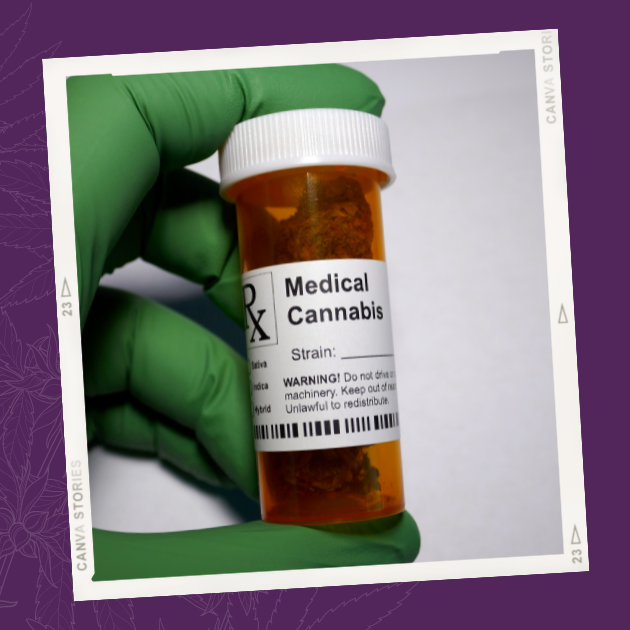
It is worth noting that cannabis, in general, has also been found to have beneficial effects in treating a host of other ailments and illnesses.
Cannabis Microdosing for Growth
The relationship between cannabis and creativity has long been acknowledged by musicians, artists, authors, and other creatives who have claimed that cannabis enhances their creative abilities. In recent years, this connection has been supported by scientific research. For example, a study conducted by the Beckley Foundation revealed that cannabis has the potential to impact verbal fluency. Individuals beginning with lower levels of creativity demonstrated growth similar to those with higher levels of creativity.
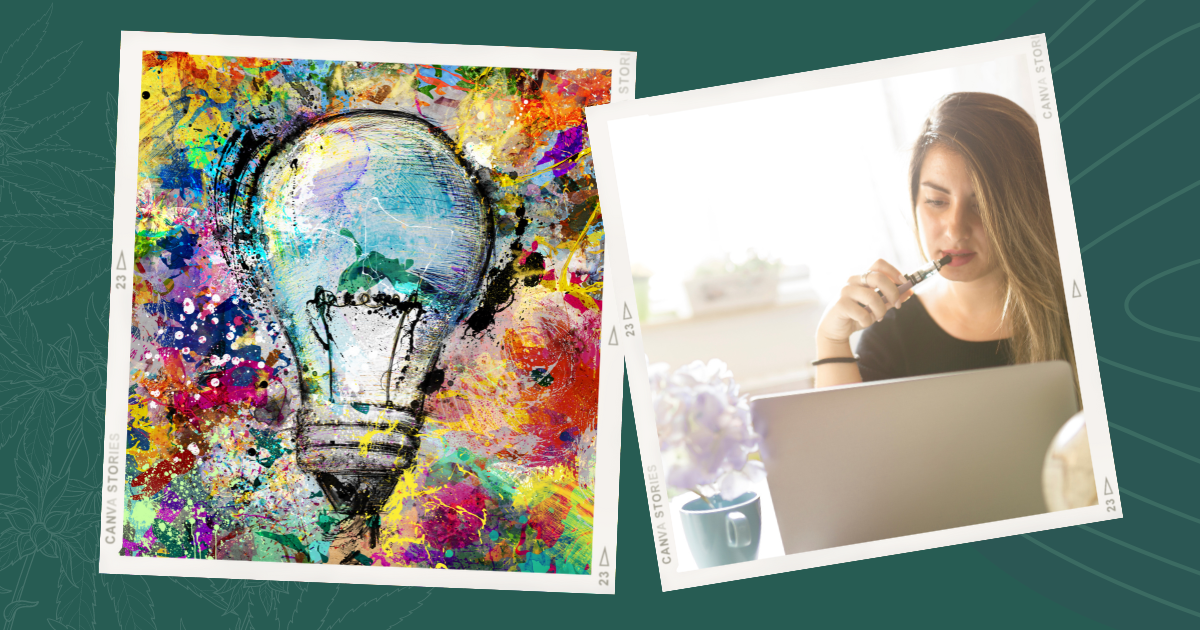
In addition to its effects on creativity, cannabis is also believed to improve productivity. Many professionals who microdose with cannabis report that it increases focus and improves their ability to take a new perspective. Despite the commonly held belief that cannabis leads to laziness, some users have reported that sativa strains can boost motivation, making work more enjoyable.
Beyond its effects on creativity and productivity, cannabis may have psych-spiritual benefits for many. People report enhanced meditation as well as a deeper connection with other individuals, the Earth, and even the universe. Encounters with God or other higher powers and even an increased awareness of the present are also common. Many people have discovered new viewpoints on the meaning of life, their role in the world, and their perception of it.
Overall, microdosing with cannabis has the potential to hold many spiritual and psychological benefits to those who are open.
Cannabis Microdosing FAQs
If cannabis microdosing appears to hold potential for you, consider these frequently asked questions.
Q: What Is the Optimal Dose for Cannabis Microdosing?
A: Microdosing cannabis refers to consuming small amounts of the drug, typically less than 5 milligrams of THC. However, we recommend starting with an even lower dose, between 1 and 2.5 milligrams. Then, gradually increase if you find you need more THC to achieve beneficial effects.
Q: Will I Get High if I Microdose with Cannabis?
A: With microdosing, the goal is to achieve subtle effects rather than a full-blown high. While microdosing may not produce the traditional “high” associated with cannabis use, it can still affect mood, energy levels, and cognitive function. Some people may experience mild euphoria or increased focus and creativity, while others may not feel any significant effects.
Q: How Often Should I Microdose with Cannabis?
A: A: The frequency at which you should microdose cannabis depends on you and your specific needs and goals. Some people may choose to microdose daily, while others may only do so occasionally. It is important to note that cannabis can affect people differently, and it may take some experimentation to find the right dosage and frequency for you.
It is also important to remember that cannabis can stay in the body for several days, so if you are microdosing daily, it is important to pay attention to how you feel and to monitor any changes. Additionally, it is important to consult with a medical professional before starting any new cannabis regimen, especially if you are taking any other medications.
Give Cannabis Microdosing More Thought
Cannabis is a complex and often misunderstood plant with a wide range of potential benefits and uses. Those interested in the therapeutic and growth aspects of cannabis rather than a psychoactive high may find many advantages with cannabis microdosing.
People who microdose report an increase in creativity, focus, and productivity, as well as a decrease in anxiety and depression. As researchers learn more about the long-term effects of low-dose cannabis, more essential questions will be answered. Stay tuned-in to our cannabis blog for continuous news and updates.
Sources
- https://www.health.harvard.edu/blog/the-popularity-of-microdosing-of-psychedelics-what-does-the-science-say-202209192819
- https://www.frontiersin.org/articles/10.3389/fphar.2022.888903/full
- https://www.ncbi.nlm.nih.gov/pmc/articles/PMC6326663/
- https://www.sciencedirect.com/science/article/abs/pii/S1526590012000193
- https://www.ncbi.nlm.nih.gov/pmc/articles/PMC4165471/

